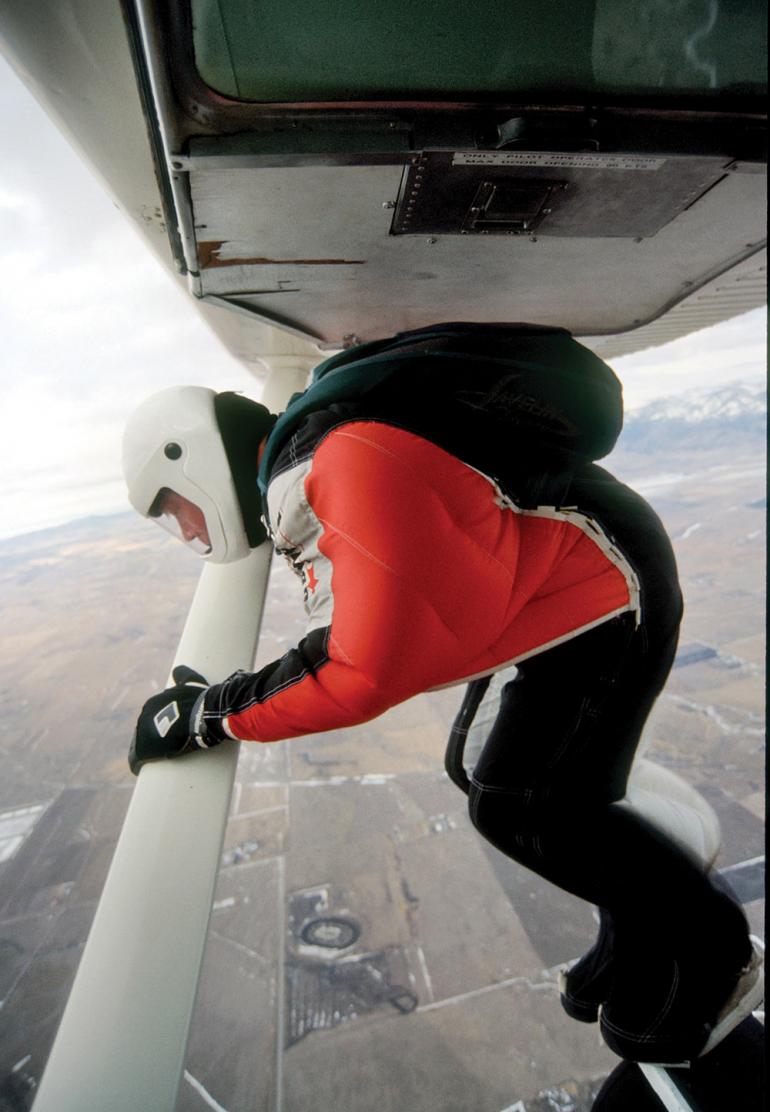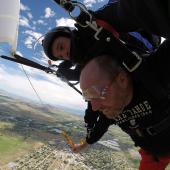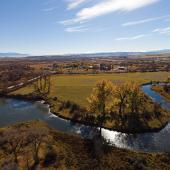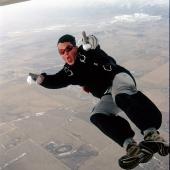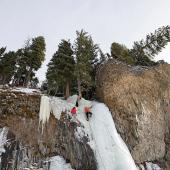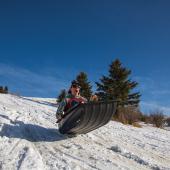Shootin' the Breeze
An adrenaline junkie's day off.
When Jeff Schlabs of Bozeman feels like unwinding, he flings himself from an airplane, or just jumps off a cliff.
Skydiving is Schlabs’s passion; the 43-year-old has logged over 5,300 jumps in his 18-year free-fall career. From exotic locations like Bali, Indonesia, to Chamonix, France, Schlabs has traveled the globe in pursuit of the ultimate leap. “My grandparents took me to the Kalispell airport to watch the skydivers when I was young, and I always wanted to do it,” says Schlabs. “Now I’ve literally skydived all over the world… skydiving’s a pretty neat way to see it.” He often uses the latest innovations, like a specially-designed semi-winged jumpsuit, to enhance his flights.
About eight years ago, Schlabs’ free-fall ambitions led him beyond leaping from aircraft to BASE-jumping, from buildings (B), antennae (A), bridges (S for span), or cliffs and mountain-tops (E for earth). This more extreme form of skydiving offers “higher risk but greater reward,” according to Schlabs. “You have to travel to do most of the BASE-jumps,” he says, explaining that while buildings like the Space Needle or mountains like El Capitan offer tempting targets to the BASE-jumper, in the United States, they are most often illegal to leap from. “In Europe,” says Schlabs, “there’s no real thing as out-of-bounds.”
While buildings and bridges do offer some spectacular free flight, Schlabs says that “back-country skydiving” from mountains and cliffs is a particular pleasure for him. “Parachuting from cliffs is a basic form of free-fall, and free-fall is addictive,” he says. “BASE-jumping especially teaches you about yourself, your abilities, and your judgments. You look your own fears in the eye and deal with them head-on.”
Whether it’s a leap from a cliff or an airplane, Schlabs is indeed dealing with things head-on when he’s flying in his winged “birdman” suit, which slows a skydiver’s normal terminal velocity (the speed reached before deployment of the parachute) from 120 to 70 miles per hour.
“It’s an incredible new aspect to the sport,” Schlabs explains. “You’re gliding like a flying squirrel…it’s the ultimate in human flight.” When BASE-jumping in the birdman suit, Schlabs says he’s literally flying the talus slopes. “My passion lately is the birdman base-jump,” he said, adding that he has one “big trip” planned this year, somewhere in the northern Rockies.
Schlabs also introduces people to the passion of skydiving; he is a certified instructor with his own Cessna 182 aircraft. Operating most often from Gallatin Field, Schlabs offers tandem jumps, “the opportunity for locals to free-fall a mile,” and he also teaches the Accelerated Free Fall method of skydiving. “AFF is the preferred new training method… I haven’t even taught with the old static line for years… it’s all free-fall,” says Schlabs.
For a first-time jumper, a tandem jump is essentially the first lesson in skydiving, after a 30- to 40-minute session on the ground. Body harnesses directly attach the instructor and student; each buckle alone has 5,000 pounds of tensile strength. The chute system is twice as large, to carry the double weight. Jumping from 10,500 feet above ground level on average, it takes about four minutes for the pair to reach the ground; it takes about 30 seconds to free-fall that first mile before the chute opens.
“If you’re not just a little scared that first jump, you’re just not normal,” jokes Schlabs. He says that three tandem jumps are the prerequisite for the AFF course; the fourth leap is basically the first solo jump. After eight jumps with the instructor, a skydiver is “off student status, and jumping on their own,” and able to work toward a “Class A” skydiver’s license.
“Jeff makes things real clear… he’s real patient, and encourages you quite a bit,” says one of Schlabs’ former AFF students, 53-year-old Suzanne Goodman of Livingston, who now has her own “Class A” license. She says she has jumped 300 times since she began skydiving six years ago.
“It’s amazing… incredible… I couldn’t think of anything else,” says Goodman of her first tandem leap. “I’d try to read a few lines in a book and find myself back in the sky. I don’t know how people can leave it alone once they do it.” She says the feeling of being surrounded by “nothing but air… on your own… is pretty outstanding... It’s a really nice feeling. There’s nothing like it.”
Schlabs couldn’t agree more. “I do it for my own heart,” says Schlabs. “I really enjoy the pure freedom of jumping out of an airplane or off of an object…it’s good for my soul.”
I'll Stay Inside the Plane, Thank You Very Much
Not everyone is convinced that jumping out of a perfectly good airplane is the wisest of choices. If you do wish to view our mountains from a unique perspective but would enjoy knowing there’s a motor between you, 3,000 feet of air, and the earth, try out an introductory flight from one of Gallatin or Park County’s flying schools. If nothing else, it’s a great way to get more than the usual craned-neck view over a stranger’s lap from your aisle seat. While you won’t see 360 degrees, 270 isn’t bad, and by circling aloft you’ll see it all anyway. Unlike typical tourist sight-seeing trips where you’re merely along for the ride, going up with a flight school includes a session of ground instruction where you learn to handle the plane—and then you’ll have the chance to fly the small aircraft yourself, for as long as you want to be in control. With an instructor beside you, you can relax and utilize the time you’re not worrying about your chute opening to enjoy the views and your newfound direction to go and get away from it all.
Scenic-Flight Services
Summit Aviation, 406-388-8359
Paradise Valley Flying Service, 406-333-4788
—Tanner Strickland

